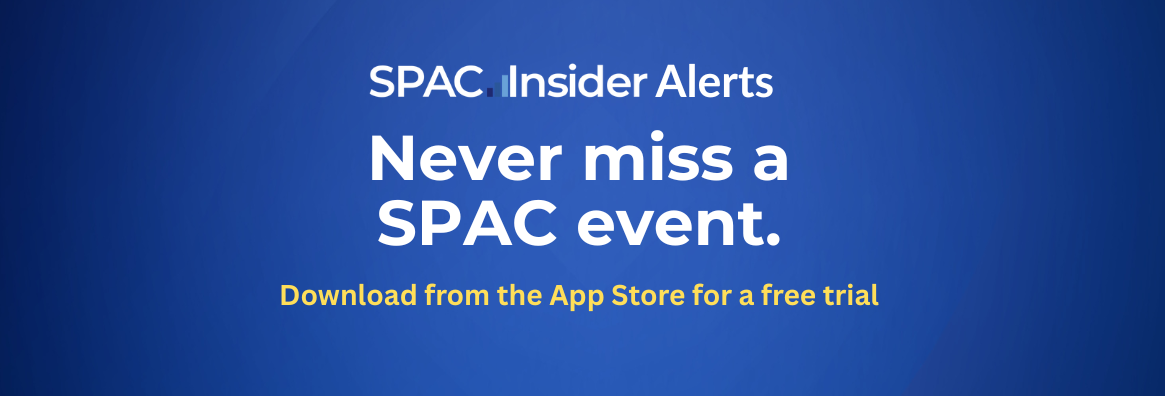NYSE vs. Nasdaq: The Emergence of A Delineation in Terms.
(Note: The below was a topic that was already discussed in the weekly subscriber email, but given that it is a very relevant topic we have updated the data and are re-posting to the site)
The NYSE put out a press release a week or so back, detailing their results for the first half of 2018. Of note, there were 41 IPOs raising $19.3 billion, of which six were SPACs (14.6%). Considering that the first ever NYSE SPAC listing occurred only a little more than a year ago with TPG Pace Energy (May 2017), this is significant. However, looking a little deeper into which SPACs get listed on the NYSE, you start to see a divergence in structures compared to the Nasdaq listed ones.

As you can see, the above are all 2018 SPACs that have listed on the NYSE (plus, Spartan Energy on file). With the exception of Union Acquisition Corporation, all are 100% in trust, 24 months to complete, the warrants are all 1/3 or 1/2 of a full warrant, and the unit does not include a right. They are also all quite large in size. Now let’s compare that to the Nasdaq listed SPACs.

With the exception of the three transactions I’ve highlighted in blue, which have the same terms as the NYSE listed SPACs, the Nasdaq listed SPACs tend to follow a different set of terms (again, only 2018 SPACs). The majority have a completion deadline less than 24 months with a full Warrant. However, if they do have a deadline of 24 months, those SPACs over-fund the trust. Additionally, none of the NYSE SPACs offer a Right, but five of the Nasdaq ones do.
Now, a lot of the difference can be attributed to size. To initially list on the NYSE, a SPAC needs to have a market value of at least $100 million, whereas for a Nasdaq listed SPAC it is approximately $45 million. Hence, the smaller SPACs list on the Nasdaq. But there is a clear delineation in terms. A year or so from now it will be really interesting to compare the performance of SPACs on one exchange versus the other. However, it’s unfortunately still too soon to gather any meaningful data on the NYSE SPACs since not enough of them have completed their combinations yet. But as of right now, the NYSE appears to be the exchange of choice for the deals that can command Tier-1 SPAC structures.
Additionally, you’ll notice that the NYSE is dominated by the Tier-1 banks. Tier-1 banks with Tier-1 structures for Tier-1 management teams. Not altogether a big surprise. However, again, SPACs are still relatively new to the NYSE. As I mentioned above, it’s only been a year since we had the first NYSE SPAC listing and the exchange is actively courting new SPAC business, so the second half of the year could see some changes to this list.
One other quick note on the topic of exchanges. Both the Nasdaq and the NYSE withdrew their proposals to the SEC to change the listing requirements for SPACs. The most important change being the reduction in the requirement of 300 round-lot shareholders to 150. Nasdaq removed their proposal first, in June, but the NYSE soon followed in early July. No reason as to why was given, but it appears it just wasn’t going anywhere since the SEC repeatedly requested additional information, ad nauseum. It’s unfortunate since this would have been a real game changer for SPACs, but as of today, it’s just not happening.


Terms Tracker for the Week Ending July 11, 2025 Welcome to our weekly column where we discuss the findings from our IPO terms tracker based on the previous week’s pricings. One more IPO priced this week bringing July’s total to 8. However, there are still three more weeks left in the month so that number...
At the SPAC of Dawn Lately de-SPACs have been announcing corporate moves of a kind frequently in trios as was the case earlier this week when WeBull (NASDAQ:BULL), AST SpaceMobile (NASDAQ:ASTS) and Quantum-Si (NASDAQ:QSI) all announced major equity raises. This week, it is a trio of de-SPACs making reverse stock splits in unison, which is...
A look at Plus’ software-first approach to autonomous trucking. After years of investment and excitement, the dawn of self-driving cars and trucks is now here. The question now is which business model among autonomous driving technology companies will win out? This week, we speak with David Liu, CEO of autonomous trucking company Plus. Plus announced...
At the SPAC of Dawn One thing that SPAC investors can typically count on while their money is invested in a SPAC’s trust is that it is going to grow one way or the other between now and their next redemption opportunity, but the devil can occasionally be in the details. In 2024, it became...
Thunderstone has filed for a $50 million SPAC to put a new first-time Asia-based team in action on a generalist hunt. The new SPAC is offering investors a right to a 1/8 share in each unit with 18 months to initially complete a business combination. It is the 8th fresh S-1 filed with underwriter D....